|
|
|
|
Products mentioned in this Article
|
|
|
|
|
|
|
|
|
 |
|
|
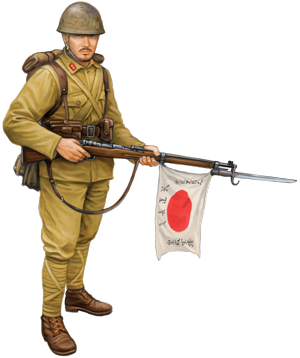 |
Painting Japanese
with James Brown & Mark Hazell
James and Mark demonstrate how to paint Japanese infantry and tanks for Flames Of War.
|
Japanese Infantry Painting Guide
|
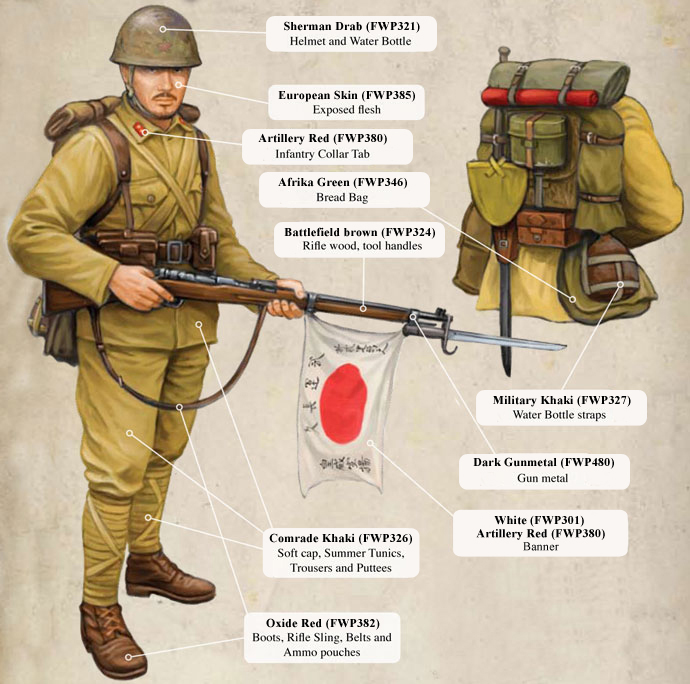 |
Highlight Colours
|
Item
|
Basic Colour
|
Highlight Colour (some are mixes)
|
Helmet & Water Bottle.
|
Sherman Drab (321)
|
Firefly Green (348)
|
Soft cap, Summer Tunics,
Trousers & Puttees.
|
Comrade Khaki (326)
|
75% Comrade Khaki (326)
25% Crusader Sand (363)
|
Boots, Rifle Sling,
Belts & Ammo pouches.
|
Oxide Red (382)
|
Devil Red (381)
|
Bread Bag
|
Afrika Green (346)
|
75% Afrika Green (346)
25% Crusader Sand (363)
|
Rifle wood & Tool handles.
|
Motherland Earth (383)
|
Battlefield brown (324)
|
Water Bottle straps.
|
Military Khaki (327)
|
Worn Canvas (306)
|
Gun metal rifle barrel & fittings.
|
50% Black (300)
50% Dark Gunmetal (480)
|
Dark Gunmetal (480)
|
|
Japanese tunics officially had coloured collar tabs to distinguish each branch of service (shown below), but they were usually removed when on campaign, leaving the collars blank. This leave you with the option to add them or not.
|
| |
Infantry (Red): Artillery Red (380) |
| |
Cavalry (Green): Army Green (342)
|
| |
Artillery (Yellow): Cavalry Yellow (361)
|
| |
Engineers (Crimson): Artillery Red (380) + ¼ Infantry Blue (400) |
| |
Armoured troops (Red): Artillery Red (380)
|
|
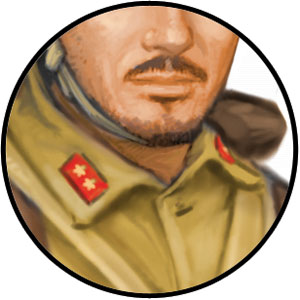 |
| Manchukou Uniform |
During the 1930s the Manchukou Army adopted a uniform similar to that of the Imperial Japanese Army. The uniforms were cut from the same Khaki cloth as the Japanese uniform. Equipment and weapons were much the same. Head gear was also similar with a Japanese style forage cap and the Japanese model 1930 helmet. Manchukou troops also were issued with peaked caps and fur hats for winter. The Manchukou Army cavalry at Nomonhan wore green collar tabs.
|
| Painting Banner and Standards |
The Japanese carried both simple banners
featuring the red sun and their rising sun regimental standard into
battle. Both present a great opportunity to really make you Japanese
stand out on the battlefield.
A depicted in our painting guide
figure on the previous page the banners were simple white fields with a
large red sun in the centre. Often they were accompanied by Japanese
characters running down the left and right of the red sun disc.
|
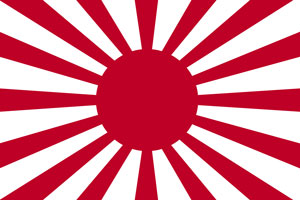 |
Notes on the Japanese Regimental Standard
A
Imperial Japanese Army regimental standard has the sun disc positioned
in the centre of the rectangular standard (the Navy has it closer to the
pole). It has 16 red rays, with 5 each spreading to the top and bottom
of the standard and three each to the left and right. |
| The banners are usually attached to the soldier’s rifle. Both the Banners and Standards are made of wavy material, so like uniforms, they benefit from some shading and highlighting. |
Painting The Basic White Of The Banner
|
| Japanese Vehicles |
Before 1942 there was little standardisation in paint schemes for Imperial Japanese Army armour. Most vehicles were painted in a hard-edged camouflage scheme with distinctive yellow stripes. The exact colours and how they were applied remains a complicated and confusing subject. Descriptions and names of colours are not consistent between different sources.
|
The official instructions from the Imperial Japanese Army on how tanks were to be painted are quite well documented. But debate continues among the various researchers about how closely the instructions were actually followed. Official instructions called for vehicles to be painted in a khaki color (‘tsuchi kusa iro’) Comrade Khaki (326) or Panther Yellow (210), known to US intelligence as ‘Japanese Artillery Brown.’ Roughly 30% of the vehicle was painted in disruptive patterns of a dark mahogany brown or earth color (‘tsuchi iro’) Oxide Red (382).
|
Officially, it was recommended that green (‘kusa iro’)
(Army Green 342) should replace the khaki (‘tsuchi
kusa iro’) base colour in summer, or in southern areas.
In practice, though, green was often instead added as an
additional colour, in disruptive areas covering roughly 20%
of the vehicle’s surface. Areas of colour were sometimes
separated by thin black lines.
|
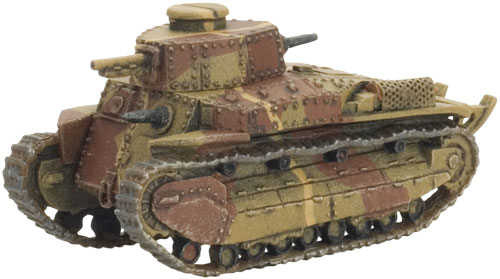 |
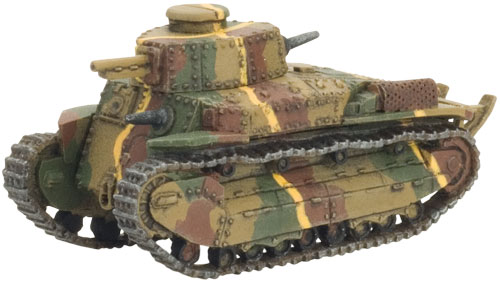 |
Yellow wavy lines Cavalry Yellow (361) were applied in a rough cross shape when viewed from above, centred on the top of the vehicle. There is some dispute about the actual colour of these lines. Some researchers have theorised that it was actually a sandy, ‘dry grass’ colour Sicily Yellow (362), which was described as ‘yellow’ because that is how it looked in contrast with the darker camouflage colours. This is certainly a plausible hypothesis, because the lowcontrast result is more in keeping with camouflage theory at the time.
|
For the Battlefront studio models pictured in Rising Sun, I hedged my bets, painting some in the low-contrast scheme with Sicily Yellow (362) and some in the high-contrast pattern with the green included and bright yellow lines.
|
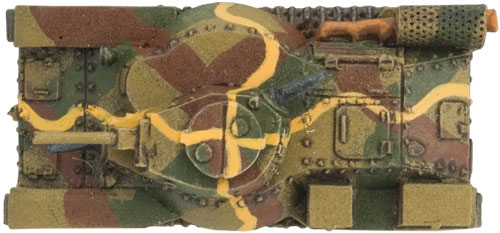 |
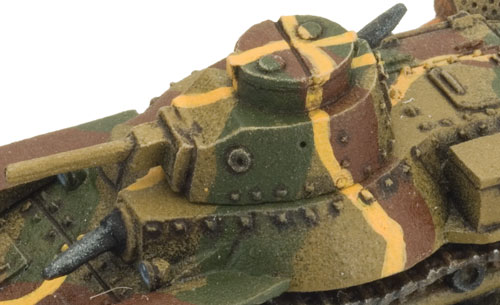 |
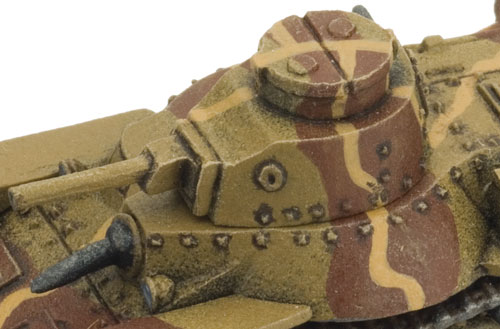 |
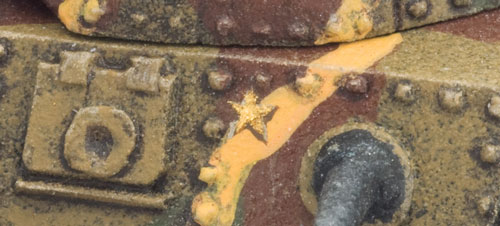 |
Tank Star
Army vehicles usually had a small five-pointed brass star plaque on the front superstructure, the traditional symbol of the Imperial Japanese Army as granted to them by the Emperor Meiji. If you want to go to this level of detail, you can carefully paint this with a small detail brush.
|
Painting Japanese Vehicles
|
| Everyone has their own way of painting, so
whatever techniques you prefer to use are just fine, as long as you are
happy with the result. Here is one suggested method which doesn’t take
too long and gives a good-looking result. |
Step One
Undercoat the tank with black primer, then basecoat with Comrade Khaki (326) or Panther Yellow (210)
|
Step Two
Paint Oxide Red (382) patches of camouflage.
|
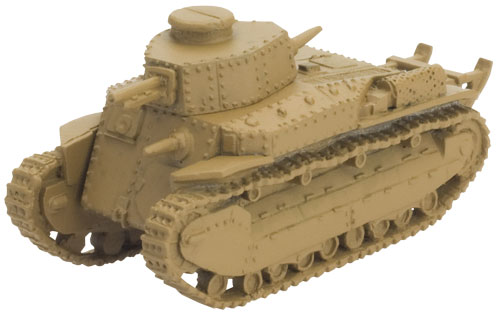 |
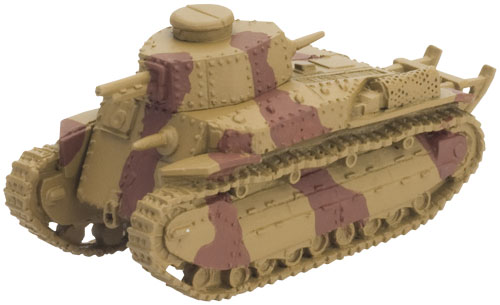 |
Step Three
Paint Camuflage patches of Army Green (342),then give the entire tank another thin wash of Manstein Shade (490).
|
Step Four
Paint over the yellow patches with Comrade Khaki (326). Touch up the brown and green patches with Oxide Red (382) and Army Green (342), leaving black in the recesses.
|
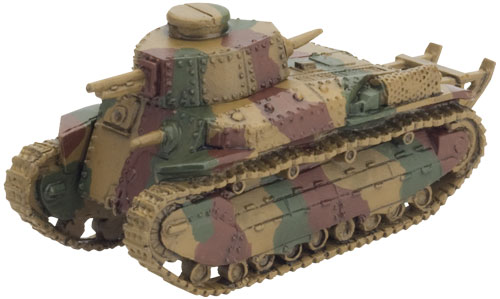 |
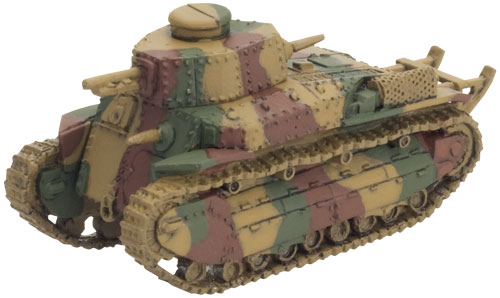 |
Step Five
Paint a thin line of Sicily Yellow (365), forming a rough cross pattern. Paint the tracks and Machine-gun Barrels Worn Rubber (302), wash with Manstein Shade (490), and drybrush with Dark Gunmetal (480).
|
Weathering
Paint over tit yellow ochre cross with Cavalry Yellow (361). Add paint chipping with Dark Gunmetal (480), then drybrush Motherland Earth (383) and Comrade Khaki (326) over the tracks and bottom half of the hull to represent dust and dirt. Bradley shade (490) can be used to add rust streaks.
|
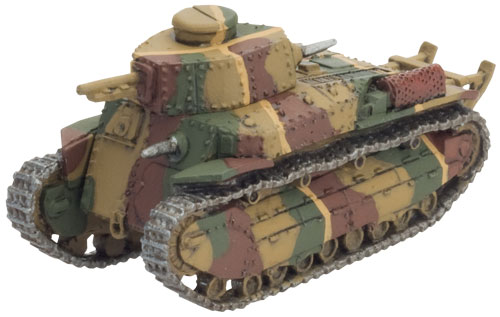 |
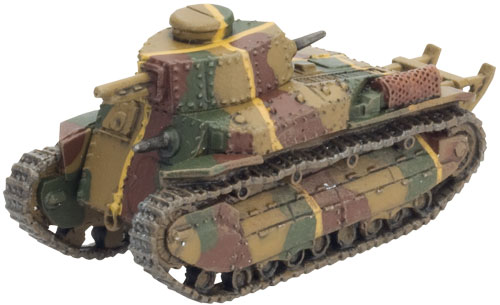 |
■ Jowett, Philip. MAA 362 The Japanese Army 1931-45 (1), Osprey Publishing Ltd., 2002.
■ Millman, Nick. Japanese Armour Colours, A Primer, 1937-1945, 2012.
■ Zaloga, Steven J. NV 137 Japanese Tanks 1939-45, Osprey Publishing Ltd., 2007.
|
Last Updated On Sunday, September 11, 2016 by Wayne at Battlefront
|
|
|